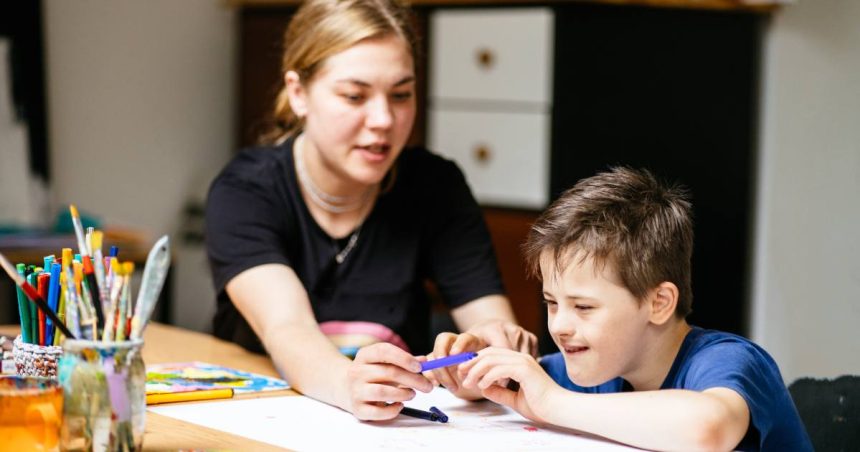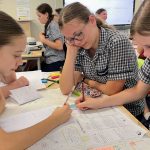Students with special needs and disabilities (SEND) are continuing to fall behind their peers in the classroom, according to latest research.
The UK study of over 2.5 million year six students found that those with specific learning disorders lagged behind their peers in reading, writing, and maths, with the gap widening over time.
Students with dyslexia and speech, language, and communication needs were, on average, 1.5 to two years behind, while those with autism are about a year behind their classmates.
Australian researchers suggest curriculum changes to better support neurodiverse students in order to foster a greater understanding about how to best facilitate students with specific learning disorders.
Professor Robyn Young is a leading researcher in Autism Spectrum Disorder, Savant Syndrome and Disability at Flinders University. Her work into developing a screening tool for screening children as young as 12 months for ASD has been widely recognised as a leading tool for Autism Detection in Early Childhood globally.
She says, “the school system that uses a band-aid approach to teach students in non-neuro-affirming ways does not work”.
“Defining progress in terms of a ‘gap’ is an interesting metric, because by definition, a person with a specific learning disorder (SLD) is behind their peers. What is more important is a within-subjects design whereby students’ developmental trajectories are examined,” says Young.
“For example, a six-year-old who is functioning academically equivalent to a four-year-old, is well below their peers. But if at 16, they are still only two years below, this is a better outcome. Yet the gap is still the same.
“Nevertheless, the reason why the gap is there is important and specific strategies need to be employed.
“In Australia, despite considerable movement to support children with specific learning disorders (SLDs) and those who are neurodivergent, there is also a considerable gap.
“The school system that uses a band aid approach to teach students in nonneuroaffirming ways does not work. To teach a student the three R’s they need to be in a state of readiness to learn.
“Too often that is overlooked as the school environment is too stressful. They may have issues communicating their needs, asking for help or having their sensory needs met.
“Often these children are bullied and, if they can get themselves to school despite the fear of all of these challenges, they may be so anxious that they cannot learn. Further, the curriculum might not be addressed to meet the needs of a child.
“For example, an autistic child who may have been identified as having learning issues yet is able to teach themselves Japanese through watching Anime, is just one example of strategies that can be employed to make the curriculum of interest and more palatable to encourage engagement.”
Neurodivergent children need tailored education
At the University of South Australia ((UniSA), Nathan Giaccio is a Lecturer in Speech pathology at the University of South Australia. With a background in autism, ADHD and neurodivergence, Giaccio has been involved with supporting both adult and paediatric populations through clinical practices.
“For every two steps forward a neurotypical child takes, their neurodivergent peers need to duck, pivot, leap 10 steps – and collapse in exhaustion,” he says.
“Over the last few years, South Australia has experienced meteoric surge in both the understanding and appreciation of the strengths and challenges of the neurodivergent brain and learning style, namely autistic and ADHD children.”
“Australian autistic and ADHD children, much like their overseas counterparts, experience similar delays in academic success.
“But a superficial top-down analysis simply comparing neurodivergent to neurotypical scores misses the most crucial point; that without a customised learning plan, neurodivergent children are not taught in a way that is conducive to how their brains process and utilise the information presented to them.
“Our modern curriculum also demands a high level of social acumen and confidence, considering the amount of group work and peer relationships that are required to participate in the workload.
“What we desperately need is a flexible curriculum that accommodates a broad range of learning styles, and recent government initiatives are helping to fast track this demand.”








